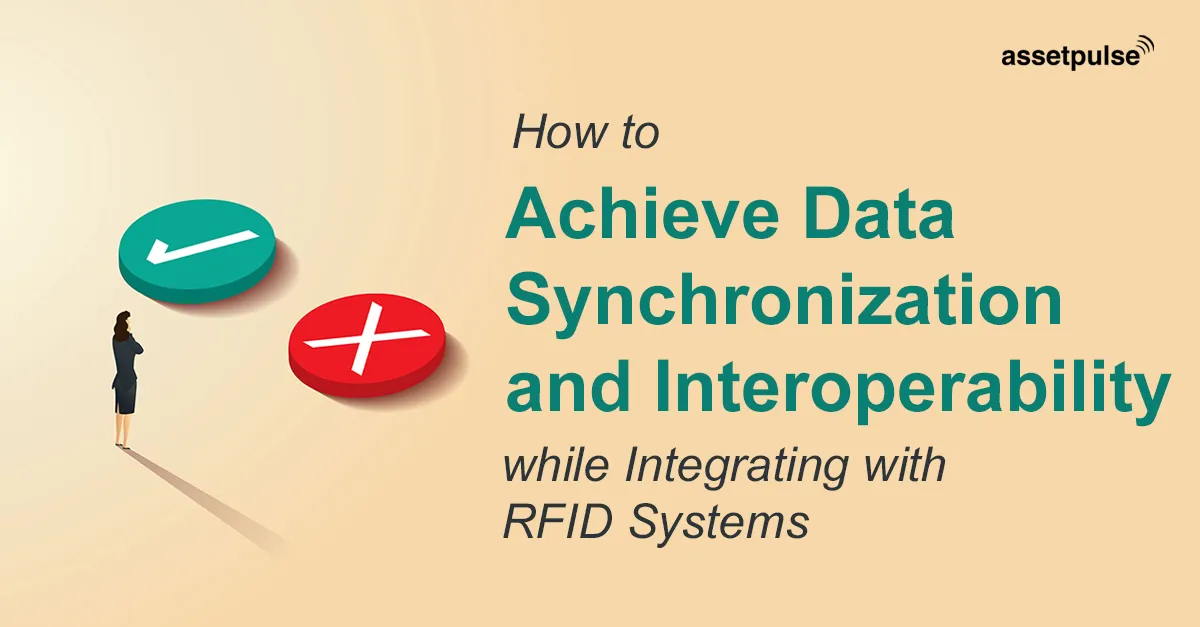In today’s data-driven world, seamless synchronization and interoperability have become essential elements for businesses seeking to harness the full potential of RFID tracking systems. Integrating RFID technology into your operations holds immense promise, from enhanced inventory management to improved supply chain visibility. However, the success of any RFID implementation hinges on the ability to achieve smooth data synchronization and interoperability with existing systems.
In this blog post, we will delve into the critical strategies and best practices that will unlock the true power of RFID technology by ensuring data harmony and compatibility. Get ready to discover the key to unlocking unparalleled efficiency and accuracy as we embark on a journey towards achieving data synchronization and interoperability with RFID systems.
What is Data Synchronization
Data synchronization refers to the process of ensuring that data is consistent across multiple systems. This is important for RFID asset tracking systems because it ensures that the data about assets is always up-to-date. If data is not synchronized, it can lead to errors and inconsistencies, which can make it difficult to track assets and make informed decisions about asset management and manufacturing.
What is Interoperability
Interoperability is the ability of different systems to communicate and exchange data amongst themselves. This is important for RFID asset tracking systems because it allows them to share data with other systems, such as ERP systems, CMMS (maintenance management systems) and MES systems. This sharing of data can help to improve the efficiency and effectiveness of asset management and manufacturing processes.
Ways to Achieve Data Synchronization and Interoperability
Data synchronization and interoperability play a crucial role in the seamless integration of RFID systems with other platforms, enabling efficient communication and data exchange.Here are some of the few ways to achieve it:
- Standardize Data Formats: Adopt standardized data formats and protocols that are widely accepted within the industry. This ensures that all systems involved can interpret and communicate data effectively.
- Use Application Programming Interfaces (APIs): Implement APIs to facilitate smooth data transfer between different systems. APIs act as intermediaries, allowing systems to communicate and share information in real-time.
- Data Mapping: Create a comprehensive data mapping plan that defines how data from one system will be mapped to the fields of another system. This mapping ensures that data remains consistent and accurately aligned across all integrated systems.
- Real-time Data Updates: Implement mechanisms to ensure real-time data updates. Whenever changes occur in one system, e.g. RFID system detects change of location of an asset; the integrated systems should be promptly notified and updated to maintain accuracy and transparency.
- Data Validation and Cleansing: Conduct thorough data validation and cleansing to remove any inconsistencies or errors in the data before integrating. Clean and accurate data is essential for seamless interoperability.
- Secure Data Transmission: Prioritize data security during transmission between systems. Use encryption and secure channels to safeguard sensitive information and prevent unauthorized access.
- Cross-System Testing: Rigorously test the integration to identify and resolve any issues that may arise during data transfer. Comprehensive testing ensures that data synchronization and interoperability are achieved without disruptions.
- Monitor and Maintain: Continuously monitor the integrated systems to identify potential data inconsistencies or interoperability challenges. Regular maintenance and updates are essential to keep the integration running smoothly.
By following these steps, businesses can overcome challenges related to data synchronization and interoperability, making RFID integration with other systems seamless and efficient.
By ensuring data synchronization and interoperability, businesses can improve the efficiency and effectiveness of their asset management and manufacturing processes. This can lead to increased productivity, reduced costs, and improved compliance with regulations.
Benefits of Achieving Data Synchronization and Interoperability with RFID Systems
Here are some of the benefits of ensuring data synchronization and interoperability between RFID asset tracking systems and other systems:
- Improved Accuracy: By ensuring that data is synchronized across multiple systems, businesses can improve the accuracy of asset data. This is important for making informed decisions about asset management.
- Increased Efficiency:When data is synchronized, systems can communicate and exchange data, and businesses can increase the efficiency of their asset management processes. This can lead to reduced costs and improved productivity.
- Enhanced Compliance: When data is communicated and exchanged between systems, businesses can improve their compliance with regulations. This is vital for companies that operate in regulated industries.
If you are considering integrating RFID asset tracking with other systems, it is important to ensure that data synchronization and interoperability are considered. This will help to ensure that the integration is successful and that businesses can reap the benefits of RFID asset tracking.


